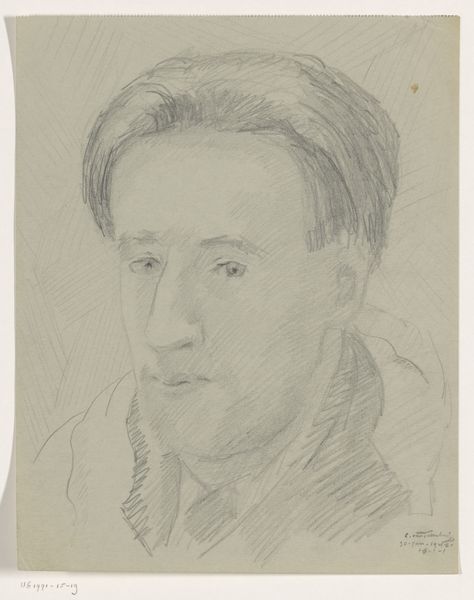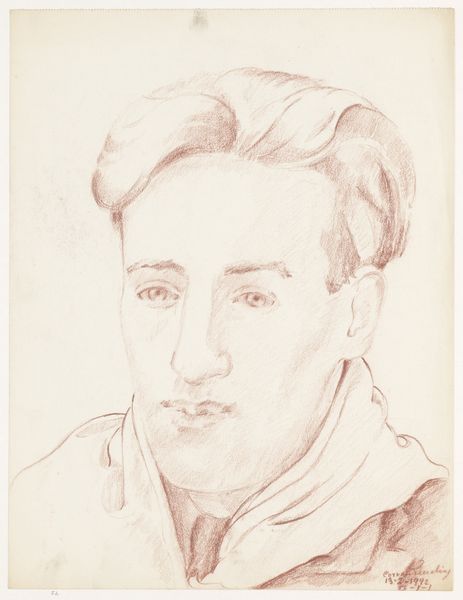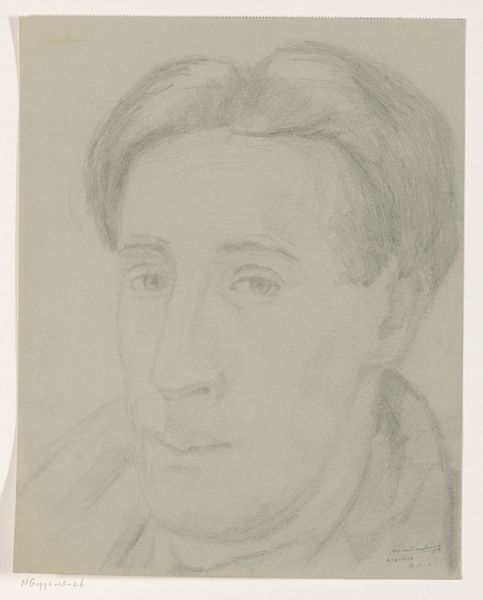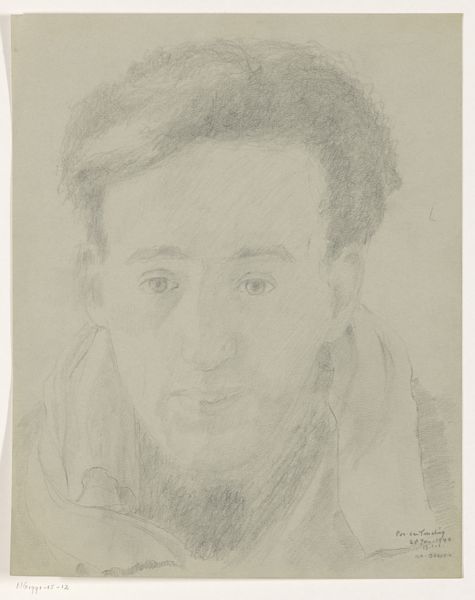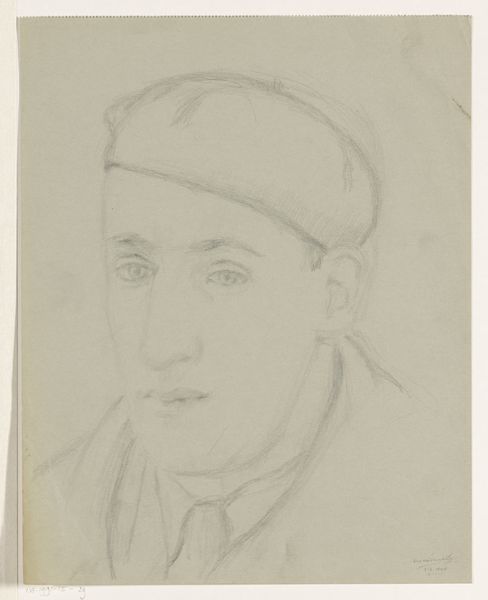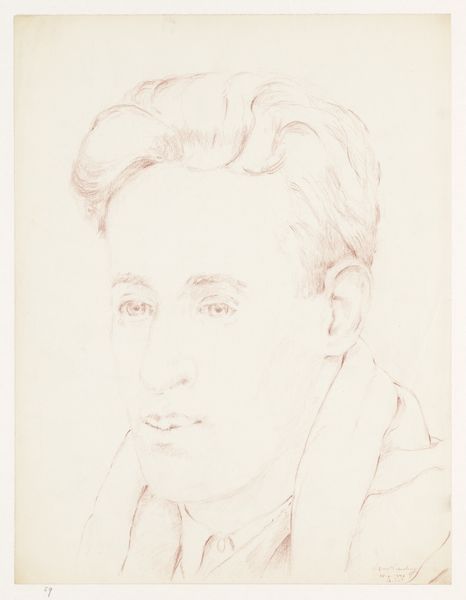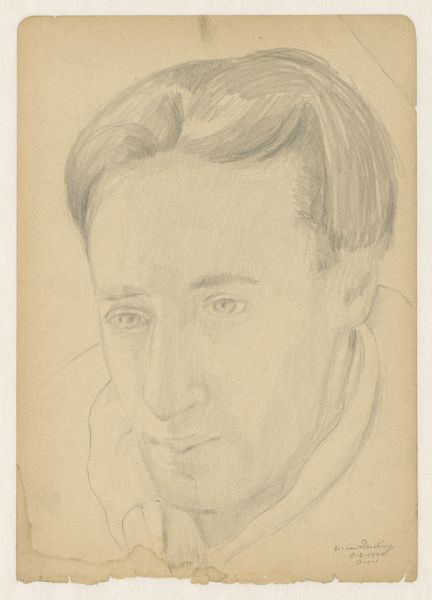
drawing, pencil, graphite
#
portrait
#
drawing
#
facial expression drawing
#
light pencil work
#
self-portrait
#
pencil sketch
#
caricature
#
portrait reference
#
pencil drawing
#
pencil
#
graphite
#
animal drawing portrait
#
portrait drawing
#
portrait art
#
fine art portrait
Dimensions: height 31.0 cm, width 24.5 cm
Copyright: Rijks Museum: Open Domain
Editor: Here we have Cor van Teeseling’s pencil drawing, "Zelfportret en face: B-1-1, 1 februari," possibly from 1942. It's a delicate self-portrait; a very subtle study in light and shadow. How do you interpret this work, especially considering the date? Curator: It's a compelling piece. Looking at this portrait through the lens of 1942, we have to consider the sociopolitical context of the Netherlands under Nazi occupation. The very act of self-representation during such a time becomes an assertion of identity, a quiet act of resistance. What do you notice about his gaze? Editor: It seems averted, almost introspective. Not defiant, exactly, but thoughtful. Curator: Precisely. Consider the limitations placed upon self-expression, especially for those deemed ‘undesirable’. A subtle detail like that gaze might speak volumes about the artist’s state of mind, the precarity of his existence, and the limitations imposed on his very being. This isn't just a face; it's a document of survival, a claim to visibility when erasure was a constant threat. How might you connect it to contemporary conversations about representation and marginalization? Editor: It highlights how vital artistic expression is, especially for those whose identities are systematically suppressed. The vulnerability of the piece amplifies its political weight. Curator: Indeed. And remember, these personal narratives contribute to the broader tapestry of historical understanding. Art becomes a tool to not just document but to humanize experiences often relegated to statistics or propaganda. What has this made you think about differently? Editor: I’m seeing how even a seemingly quiet, personal work can resonate with resistance and speak to the importance of self-representation for marginalized communities today. Curator: Exactly! Every line in that portrait becomes a testament to resilience.
Comments
No comments
Be the first to comment and join the conversation on the ultimate creative platform.
